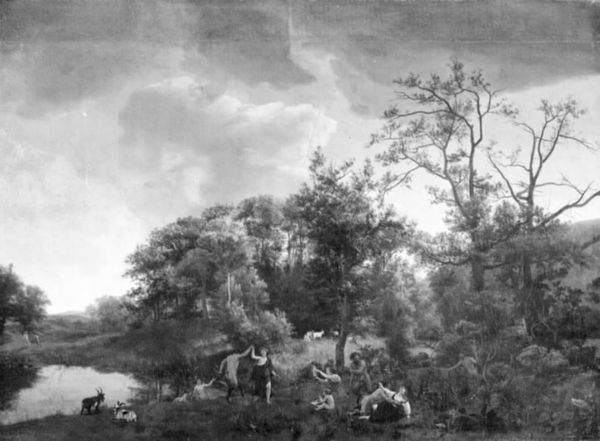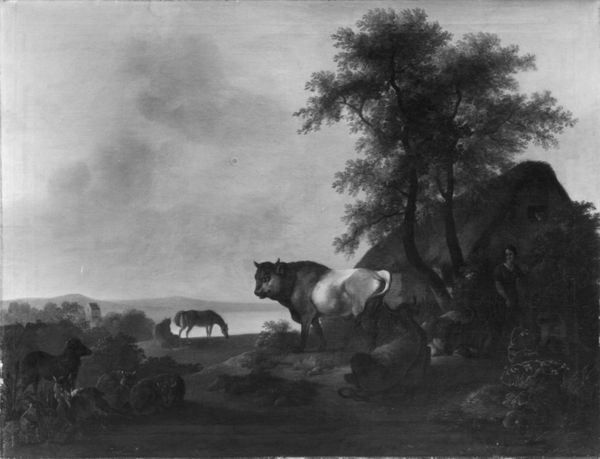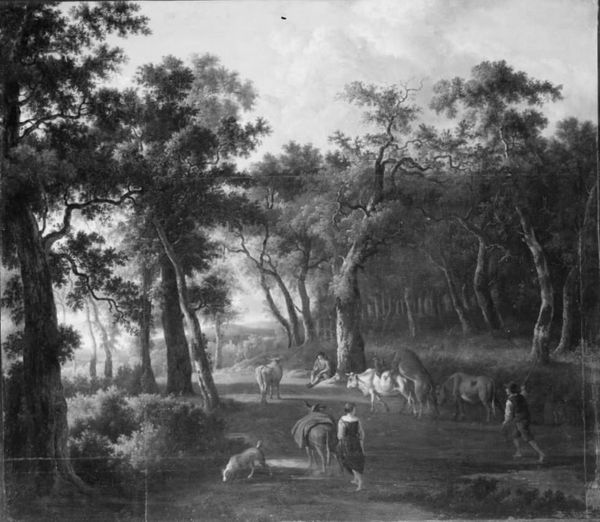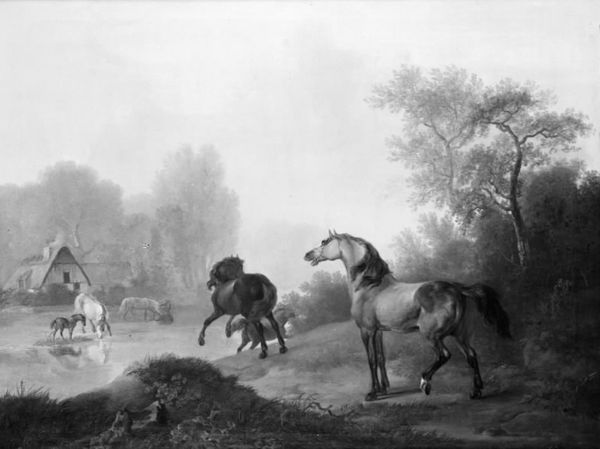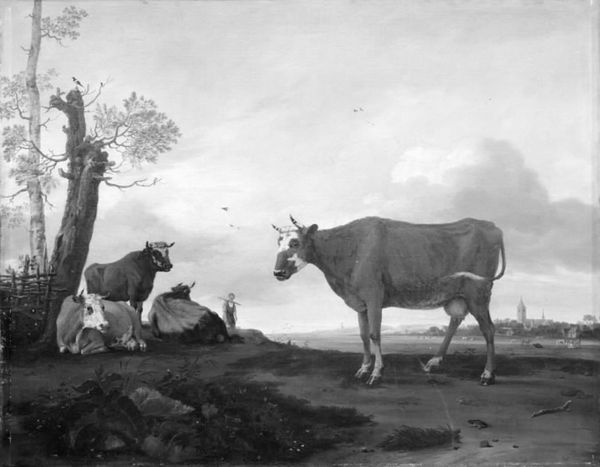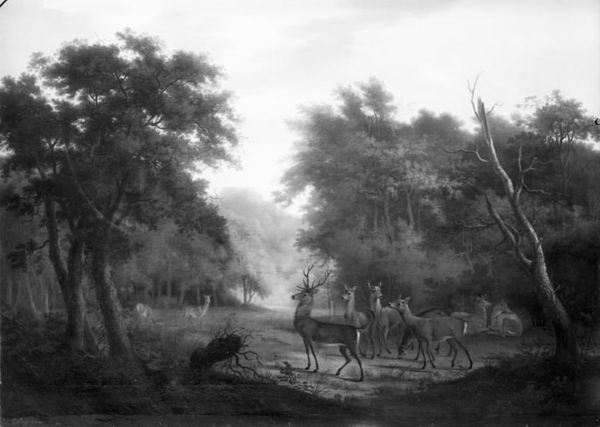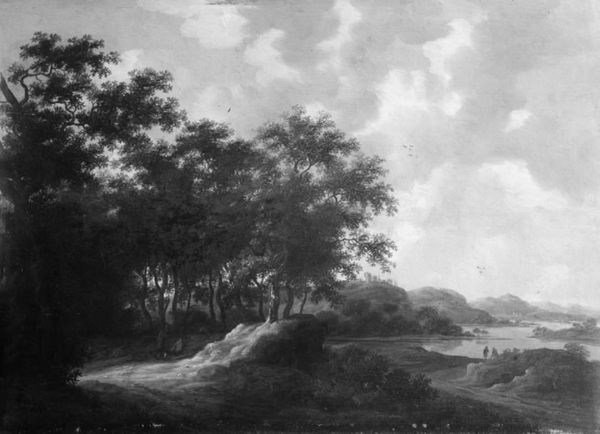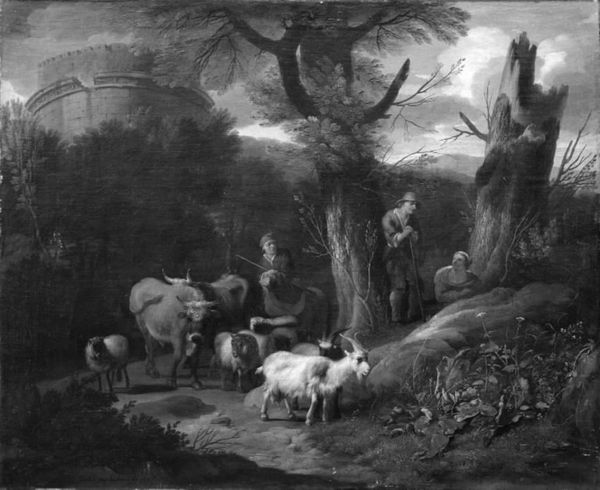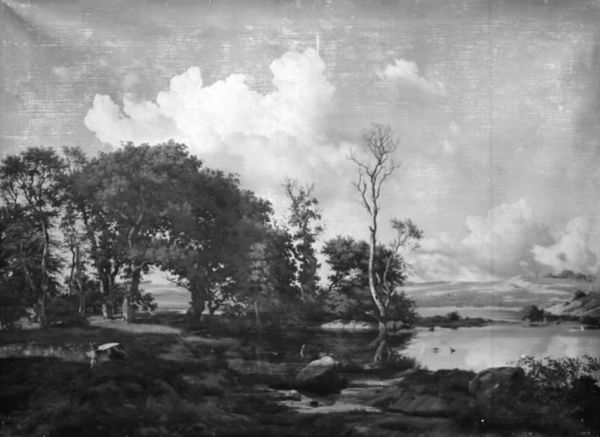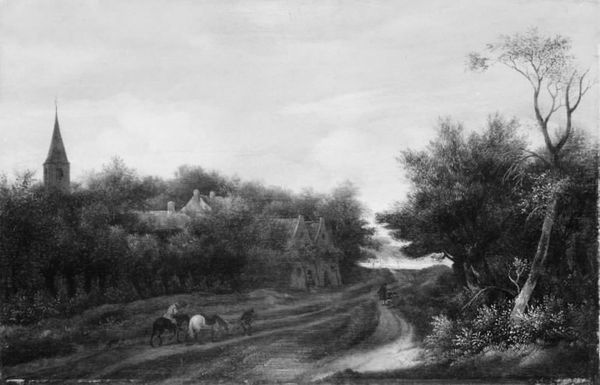
Keld Skov ved Frederiksborg med en del af det kongelige stutteri. I forgrunden schweizer- og tyrolerkvæg 1792 - 1825
0:00
0:00
painting
#
painting
#
countryside
#
landscape
#
romanticism
#
black and white
#
monochrome photography
#
genre-painting
#
history-painting
#
monochrome
#
realism
#
monochrome
Dimensions: 81.5 cm (height) x 108 cm (width) (Netto)
Curator: This monochrome painting, "Keld Skov ved Frederiksborg" by Christian David Gebauer, made between 1792 and 1825, shows a rural landscape with livestock. Editor: The atmospheric perspective in the black and white image creates a sense of depth, but it almost flattens the scene into a pattern. What does this choice to remove the color emphasize to you? Curator: Given its probable time of production, this work exists on the cusp of industrial agriculture, and looks longingly towards older methods, though probably in a quite patronizing manner. I'm interested in the relationship between the means of representing this labor, this rural idyll, versus the messy reality of land ownership and animal husbandry. How does painting transform labor into consumable imagery? Editor: That's interesting! So, you're suggesting it presents a somewhat idealized view of labor? Is that also potentially reflected in the way that it is rendered in monochrome, perhaps aestheticizing it? Curator: Precisely. Monochrome here, far from being simply a technical choice, actively participates in that idealized consumption, softening the harsh realities of labor for the emerging urban art market. We're not just looking at a pretty picture, but a carefully crafted narrative meant for a specific consumer. Consider, also, that this piece seems unfinished. Do you think that that intentional artistic gesture further elevates "high art" over craft in order to generate value? Editor: I hadn't considered the incomplete state of the work adding to that narrative. Now, I'm seeing the piece less as a peaceful scene and more as a commodity in itself, reflecting larger societal shifts and romanticism of rural life. Thanks for sharing a fascinating perspective! Curator: My pleasure! Always try to consider artwork a type of "capital", beyond only considering beauty.
Comments
No comments
Be the first to comment and join the conversation on the ultimate creative platform.
